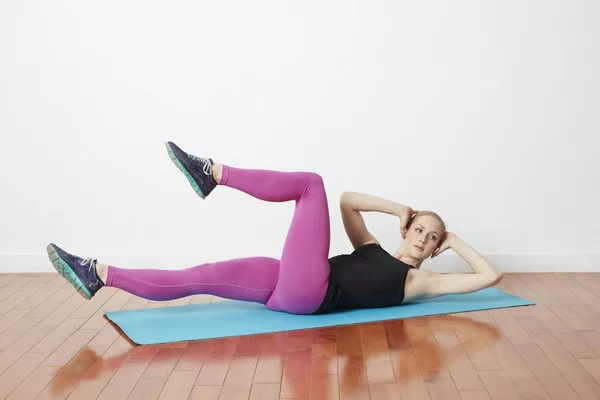Creating a fitness plan can feel overwhelming, especially with so much advice available. Yet, a well-designed fitness plan is one of the best investments you can make for your health, energy, and happiness. Whether your goal is to lose weight, build muscle, improve endurance, or simply feel more active, a clear plan helps you stay focused and motivated. This article will guide you through everything you need to know to build a fitness plan that fits your lifestyle and goals, and keeps you engaged over the long term.
A good fitness plan is more than just picking exercises at random. It involves understanding your current fitness level, defining realistic goals, choosing the right types of workouts, scheduling them sensibly, and tracking your progress. The journey toward fitness is personal, and there is no one-size-fits-all approach. However, some universal principles apply to everyone. You will learn these key ideas here, so you can customize a plan that works for you.
Why Is Setting Clear Fitness Goals Important?
Before jumping into any workout routine, setting clear and realistic fitness goals is crucial. Goals provide direction and purpose. Without them, you may find yourself exercising without a clear reason, which often leads to losing motivation. When you know what you want to achieve, whether it’s running a 5K, gaining strength, or improving flexibility, your workouts become more meaningful.
Goals should be specific, measurable, attainable, relevant, and time-bound—this is called the SMART method. For example, saying “I want to lose 10 pounds in 3 months” is more effective than “I want to get fit.” The former gives you a target to aim for, which helps you stay accountable. Clear goals also allow you to track your progress and celebrate small victories along the way, boosting your confidence and commitment.
How Do You Assess Your Current Fitness Level?
Before designing your plan, understanding your starting point is essential. Assessing your current fitness level helps you choose exercises that match your ability and avoid injury. It also lets you measure progress accurately as you move forward. You can assess fitness in several ways: check your cardiovascular endurance, strength, flexibility, and body composition.
Simple tests can give you a good overview. For cardiovascular endurance, try a timed walk or jog for a set distance. For strength, test how many push-ups or squats you can do in a minute. For flexibility, see how far you can reach your toes. Body composition involves measuring your weight and estimating body fat percentage. Many apps and gyms offer these assessments. Knowing your baseline lets you tailor your workouts appropriately.
What Are the Main Types of Exercise to Include?
A balanced fitness plan includes different types of exercise: cardiovascular, strength training, flexibility, and balance. Each type offers unique benefits and complements the others. Cardiovascular exercises, like running, swimming, or cycling, strengthen your heart and lungs. They burn calories and improve endurance, making daily activities easier.
Strength training, using weights or bodyweight, builds muscle and boosts metabolism. Muscle mass helps burn more calories even when resting. Flexibility exercises, such as yoga or stretching, keep your joints healthy and reduce injury risk. Balance training improves coordination and helps prevent falls, especially as you age. Including a mix ensures overall fitness and reduces boredom.
How Should You Structure Your Weekly Workout Schedule?
Planning your workouts across the week helps maintain consistency and gives your body time to recover. Rest days are just as important as workout days. They allow muscles to repair and grow stronger. A simple schedule might include 3 to 5 days of exercise with 1 to 2 rest days.
For example, you could do cardio on Monday, strength training on Tuesday, rest on Wednesday, flexibility and balance on Thursday, cardio again on Friday, and rest over the weekend. Listen to your body and adjust based on how you feel. If you are very sore or tired, take an extra rest day. The key is to be consistent and gradually increase the challenge.
How Can Nutrition Support Your Fitness Plan?
Exercise alone is not enough. Nutrition plays a vital role in achieving fitness goals. Eating a balanced diet with the right mix of protein, carbohydrates, fats, vitamins, and minerals fuels your workouts and aids recovery. Protein helps repair and build muscle. Carbohydrates provide energy for exercise. Healthy fats support brain and hormone health.
Drinking enough water is also critical. Dehydration can reduce performance and increase fatigue. Avoid excessive processed foods and sugary drinks, which can sabotage your progress. Planning meals and snacks around your workouts will help maximize energy and recovery. For example, eating a protein-rich snack after strength training can speed muscle repair.
What Are Common Mistakes to Avoid When Starting a Fitness Plan?
Many people make mistakes that slow progress or cause injury. One common error is trying to do too much too soon. Overtraining can lead to burnout and physical damage. It’s better to start slowly and increase intensity and duration gradually. Another mistake is neglecting warm-up and cool-down. Skipping these can cause muscle strain and limit recovery.
Ignoring form during exercises is another risk. Poor technique can cause injuries and reduce effectiveness. If you are new, consider working with a trainer or watching reliable videos to learn proper form. Lastly, don’t rely on motivation alone. Discipline and routine are more reliable for long-term success.
How Can You Stay Motivated and Consistent?
Staying motivated over months or years is the hardest part of any fitness journey. Setting small milestones and celebrating achievements keeps you engaged. Changing your routine periodically prevents boredom and challenges your body in new ways. Working out with a friend or joining a group class adds social support.
Tracking progress visually, such as with photos or journals, helps you see improvements that might not show on the scale. Remember why you started—whether it’s to feel stronger, healthier, or more confident. Motivation fluctuates; discipline and habits carry you through the tough days. Creating a plan that you enjoy makes sticking to it easier.
How Do You Adjust Your Fitness Plan Over Time?
Your fitness plan is not static. As your body adapts, you need to update your workouts to continue progressing. This could mean increasing weights, running longer distances, or trying more challenging exercises. If you reach a plateau, changing the type or intensity of workouts can help break through.
Listen to your body for signs of overtraining, such as persistent fatigue or pain. If your goals change, adjust your plan accordingly. For example, if you initially focused on weight loss but now want to build muscle, your routine and nutrition will need to shift. Regularly reviewing and revising your plan keeps it aligned with your evolving needs.
Can You Combine Fitness with a Busy Lifestyle?
Many people struggle to find time for fitness amid work, family, and other commitments. The good news is that a fitness plan can be flexible and still effective. Shorter workouts, such as 20-30 minutes of high-intensity training, can deliver great results when done consistently.
Incorporate physical activity into daily routines. Take stairs instead of elevators, walk or bike to errands, or do stretching exercises during breaks. Planning workouts in advance and treating them as important appointments helps prioritize fitness. Remember, something is always better than nothing when it comes to staying active.
What Role Does Mental Health Play in Fitness?
Physical fitness and mental health are closely connected. Exercise releases endorphins, natural chemicals that improve mood and reduce stress. Regular activity can ease symptoms of anxiety and depression, boost self-esteem, and improve sleep quality.
A fitness plan that supports mental wellbeing might include mindful practices like yoga or tai chi. Setting realistic goals reduces frustration and promotes a positive mindset. Viewing exercise as a way to care for your whole self, not just your body, encourages a more compassionate and sustainable approach.
How Do You Know When to Seek Professional Help?
Sometimes, designing and following a fitness plan can benefit from expert guidance. If you have chronic health conditions, injuries, or specific goals like marathon training, working with a fitness professional ensures safety and effectiveness. Trainers can create personalized plans, teach correct form, and keep you accountable.
Nutritionists can help tailor eating plans to your needs. Physical therapists can assist with injury prevention and rehabilitation. Don’t hesitate to ask for help if you feel stuck or unsure. The right support makes your fitness journey smoother and more rewarding.
Building a fitness plan is a powerful step toward better health and wellbeing. By setting clear goals, understanding your fitness level, including a variety of exercises, scheduling workouts thoughtfully, supporting your efforts with good nutrition, avoiding common mistakes, and staying motivated, you create a roadmap for success. Remember, fitness is a lifelong journey, not a quick fix. With patience and persistence, your efforts will pay off in strength, energy, and confidence. Start today, and let your plan grow with you.
Related Topics



































